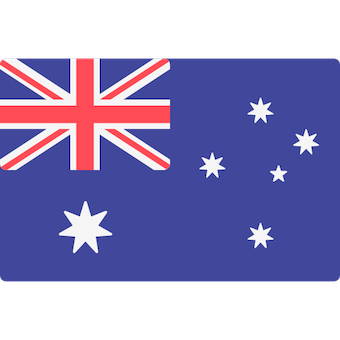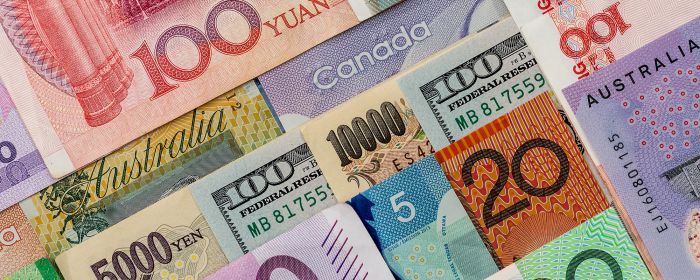For the past few years countries around the world have been enacting additional measures to review inward foreign direct investments. Due to the increased activities abroad of foreign state-owned enterprises and the sensitivity of the role played by cutting-edge technology in countries’ competitiveness, governments are scrutinizing foreign direct investment (FDI) for national security reasons. As many innovative companies are now facing cash flow problems as a result of the COVID-19 economic fallout, some have become vulnerable targets to opportunistic foreign buyers. To protect these cash-strapped companies, particularly those in medical and other key strategic sectors, and ensure that they remain in domestic hands, national governments are even further tightening their regulatory frameworks.
This dispatch looks into measures taken in Japan, Australia, and India – Canada’s top investment destinations in the Asia Pacific – to provide an early assessment of the current post-COVID-19 environment for Canadian investment in the region.
Japan expands sectors subjected to review and lowers prescreening threshold
Even before the outbreak of COVID-19, Japan had been tightening its national security review mechanisms for inbound investments. Given mounting concern over losing critical technologies related to national security and defence to foreign countries, particularly China, the government amended the Foreign Exchange and Foreign Trade Act (FEFTA) in May 2019 and expanded the scope of restricted business sectors to include information and communication technologies.  The government also lowered the review threshold for foreign investments into publicly listed companies operating in critical sectors, such as defence and public infrastructure, from 10 per cent to one per cent in November of 2019. These measures allow the Japanese government to tighten its control over FDI and prevent the appropriation of what it deems critical technologies by foreign countries.
The government also lowered the review threshold for foreign investments into publicly listed companies operating in critical sectors, such as defence and public infrastructure, from 10 per cent to one per cent in November of 2019. These measures allow the Japanese government to tighten its control over FDI and prevent the appropriation of what it deems critical technologies by foreign countries.
As Japan continues to battle the COVID-19 outbreak, concerns over FDI in critical sectors is heightened. In April 2020, the Ministry of Finance published a cabinet order on the implementation of the amended FEFTA review threshold, clarifying which companies are classified as core-sector related. The order deemed 518 of the 3,800 publicly listed companies in Japan as belonging to the national security ‘core sector.’ The list includes 12 strategic sectors in total, from aerospace and defence, to the utilities sector. Fujiflm, which is developing a potential treatment for COVID-19, is among those deemed critical for national security. Other industry giants, including Toyota and Mitsubishi, are also on the 'core sector' list. Accordingly, general investors, including government-accredited sovereign wealth funds and public pensions, seeking to acquire more than a one per cent stake in companies operating in these sectors are required to get prior approval, unless the investors ensure that they will not take part in the decision-making of the company’s core sector business operations.
Australia accelerates its restrictions in FDI policy as the spread of COVID-19 continues
Australia has also been reinforcing its screening measures for inbound FDI, particularly after the controversy that erupted over a 99-year lease of the port of Darwin to a Chinese firm in 2015. In 2017, Australia established the Critical Infrastructure Centre (CIC) to screen inbound investments in sensitive sectors, such as banking, utilities, and telecommunications. Triggered by further controversial acquisition attempts by Chinese investors, including the 2016 bid for electricity network company Ausgrid by State Grid  Corporation of China and the Hong Kong-based Cheung Kong Infrastructure, Canberra imposed stricter conditions in 2018 for inbound FDI into its electricity grids and agricultural land.
Corporation of China and the Hong Kong-based Cheung Kong Infrastructure, Canberra imposed stricter conditions in 2018 for inbound FDI into its electricity grids and agricultural land.
As Australia battles COVID-19, the government announced temporary changes in March 2020 to its foreign investment review framework. The new framework subjects all proposed foreign investment into Australia, regardless of the amount, to the Foreign Investment Review Board’s (FIRB) prescreening. The new policy applies to all sectors and types of foreign investors. Previously, private investments below C$910M originating from countries with which Australia shares a free trade agreement, did not require government screening, unless the investment targeted one of the country’s critical infrastructure sectors, such as utilities and ports. With the expanded scope of screening, FIRB may take up to six months to screen a new FDI proposal, five months longer than the earlier 30 days screening time.
India pivots its direction of liberalization in inward FDI, imposing pre-screening to its neighbours
Most sectors in India are open to FDI without government screening, a legacy of 1991 economic reforms and the 2014 ‘Make in India’ strategy to develop manufacturing hubs in 27 sectors by attracting FDI.  And in 2018, India amended its Foreign Exchange Management Act to allow foreign companies to invest in the country’s real estate and single brand retail sectors without any government pre-screening. However, investments from Pakistan and Bangladesh, as well as FDI in 22 sectors such as satellites, print media and broadcasting, air transport, and mining, all still require governmental approval.
And in 2018, India amended its Foreign Exchange Management Act to allow foreign companies to invest in the country’s real estate and single brand retail sectors without any government pre-screening. However, investments from Pakistan and Bangladesh, as well as FDI in 22 sectors such as satellites, print media and broadcasting, air transport, and mining, all still require governmental approval.
With the pandemic, India amended its policy on FDI on April 17 to prevent opportunistic foreign takeovers of domestic firms by any country sharing a land border. This change was triggered by the People’s Bank of China’s recent move to increase its share in the biggest Indian non-banking mortgage provider from 0.8 to 1.01 per cent. As a result, in addition to Pakistan and Bangladesh, India now examines all incoming FDI from countries bordering it by land, China included.
Impact on Canada’s investment engagement with the Asia Pacific
In a recent G20 Finance Ministers and Central Bank Governors meeting communique, Australia, India, and Japan joined others in vowing to “deliver a free, fair, non-discriminatory, transparent, predictable, and stable trade and investment environment, and to keep [their] markets open.” Their domestic policies regarding FDI, however, indicate otherwise and bear consequences for Canadian investment in Asia. According to the Asia Pacific Foundation of Canada’s Investment Monitor, Canadian investors in Asia are heavily engaged in sectors that are now under increased scrutiny in Japan, Australia, and India, such as industrial transportation and electricity. For example, Canadian entities, including public sector pension funds, invested a total of C$3.6 billion from 2016 to 2019 in the electricity sectors of Asia Pacific economies.
How investment behaviour will be altered in the post COVID-19 era will depend on the changing scope of the review mechanisms in each jurisdiction. While none of the countries analyzed in this dispatch are reported to be explicitly targeting Canadian companies, the consolidation or expanded scope of their review mechanisms are certainly not welcoming and could be indicative of an emerging trend in the region. In Japan, for example, the expanded review threshold could mean greater legal compliance costs and uncertainty for Canadian investors thinking of acquiring stakes in Japanese companies engaged in strategic sectors. In Australia, the extended processing time to review FDI could lead to additional costs for Canadian investors. In India, while implications for Canadian investors may in the short term lead to reduced competition from China, India’s new self-reliance economic policy and the April amendment to its FDI policy signal potential for the greater securitization of FDI, risking future Canadian mergers and acquisitions in India, representing one third of total Canadian investment value into India from 2003 to 2019.
Canadian policy-makers and investors should also be mindful that other countries in the region are also contemplating tightening rules for inbound FDI. Vietnam, for instance, is reportedly considering tightening rules for merger and acquisition deals by foreign investors. As Canada seeks to further diversify its economic partnerships across the Asia Pacific, Canadian investors and policy-makers need to pay close attention to how the shifting policy landscape around FDI screenings in the region is poised to impact Canada’s necessary diversification effort.






